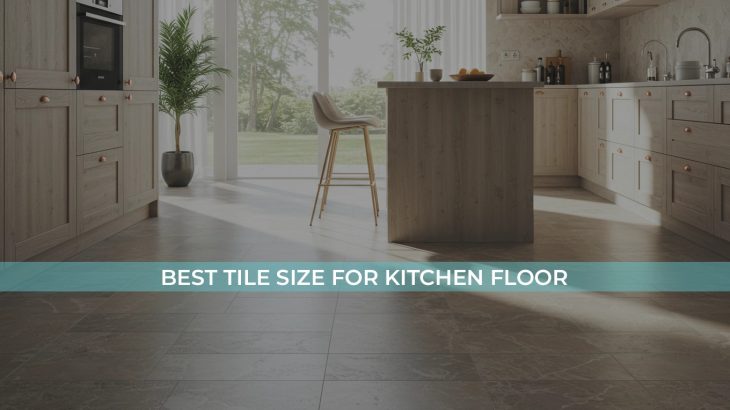Your perfect kitchen starts from the ground up, literally! Tiled kitchen floors keep your kitchen mess-free. Your kitchen floor tiles do more than look good; they define the layout, feel and overall flow of your kitchen space. If you have the right kitchen floor tiles’ size, colour and design, you can make your kitchen more spacious, cohesive and effortless.
We help you with all of your kitchen tiling projects, including choosing floor tiles for the kitchen. From remodelling a compact gallery kitchen to designing an open-plan cooking space, the type, size, finish, and tone of your tiles will impact the overall result.
By the end of this article, you will learn how to choose the right kitchen floor and wall tiles that not only look aesthetically pleasing but also strike a balance between practicality, design continuity, and long-term performance.
Kitchen Floor Tile Sizes
One of the most overlooked yet crucial design decisions is choosing the size of tiles in the kitchen floor. The dimensions you choose will affect the:
- Visual proportions
- Grout line frequency
- Installation cost and time
- Spatial perception of your kitchen
Small kitchen tiles for floors make your kitchen look busier, while large tiles create an open and minimal look.
Standard Kitchen Tile Sizes in the UK
In the UK, you can get kitchen floor and wall tile sizes in several standard measurements expressed commonly in millimetres (mm) and centimetres (cm).
Kitchen Floor Tile Sizes
What size tiles are best for kitchen floors, you ask? Here are some of the most common kitchen floor tile sizes opted for in the UK:
- 300 x 300mm: These are known as a classic and versatile option ideal for small kitchens.
- 450 x 450mm: These tiles are mid-size tiles which balance proportions and coverage of your kitchen.
- 600 x 600mm: These tiles are mostly used in modern kitchens, which require spacious layouts.
- 600 x 900mm: These tiles are counted in large format tiles, perfect for open-plan kitchens or combined dining spaces.
- 750 x 750mm or 800 x 800mm: These large-format tiles are chosen for luxurious spaces and laid with fewer grout lines.
Kitchen Wall Tile Sizes
Here are some of the most popular wall tile sizes for kitchens that UK homeowners choose:
- 100x 200mm: Known as metro tiles, they are perfect for backsplashes and feature walls.
- 200 x 200mm: These square tiles are great for traditional or vintage-inspired kitchens.
- 300 x 600mm: The rectangular format complements large-format floor tiles laid in your kitchen.
Pro-Tip: You can mix these tile sizes strategically. For instance, pair your kitchen’s large floor tiles with small metro wall tiles for texture and contrast.
How to Choose the Best Tile Size for Your Kitchen Floor
For your kitchen to look exactly how you want it to look, choosing the right kitchen tile size is important. Thus, you need to plan your kitchen size and layout carefully.
Kitchen Size and Layout
Large vs small kitchen floor tiles: it depends on your kitchen dimensions, that how different tile sizes will look good and perform even better.
- Small Kitchens: For your small kitchen to look spacious, choose large kitchen tiles like 600 x 600mm or 600 x 900mm. Keep your grout lines thinner to create a sense of space and continuity.
- Medium Kitchen: For your medium-sized kitchens, opt for mid-size floor tiles like 450 x 450mm or 300 x 600mm sizes. It balances your kitchen proportion.
- Large Kitchen: If you want tile design for open-plan kitchens and large kitchens, experiment with large-format slabs for a seamless look and small tiles for adding details.
Grout Lines
You need to choose the optimal grout line thickness. The more visible your grout lines, the busier your kitchen will look.
- Large Tiles: For your large tiles, choose fewer grout lines for a cleaner and seamless look.
- Small Tiles: For smaller tiles, visible grout lines create more visual breaks. These are ideal for patterned or textured designs.
Tile Shapes and Patterns
Different shapes and patterns make your kitchen look different and also affect its maintenance.
- Square Tiles: These tiles are contemporary and easy to install following the online kitchen flooring guide.
- Rectangular Tiles: They can be laid in different layouts. You can find numerous tile layout ideas for modern kitchens, creating creative patterns like herringbone or brick bond for visual flow.
- Plant-Style Tiles: They mimic wooden floors and elongate kitchens visually.
Best Tile Colours for Kitchen Floors
There is no religious rule to choose a colour for all sizes and designs of kitchens. There is a lot of flexibility, but that doesn’t mean that you shower your kitchen with all and every colour that you find. It should resonate with your kitchen design.
Here is a list of kitchen colour ideas for you from experts at Royale Stones UK.
Neutral Tones
Shades of grey, beige, creams and off-whites are among the best colours for kitchen floor tiles that you can choose. They complement every cabinet finish and make your kitchen feel open and airy.
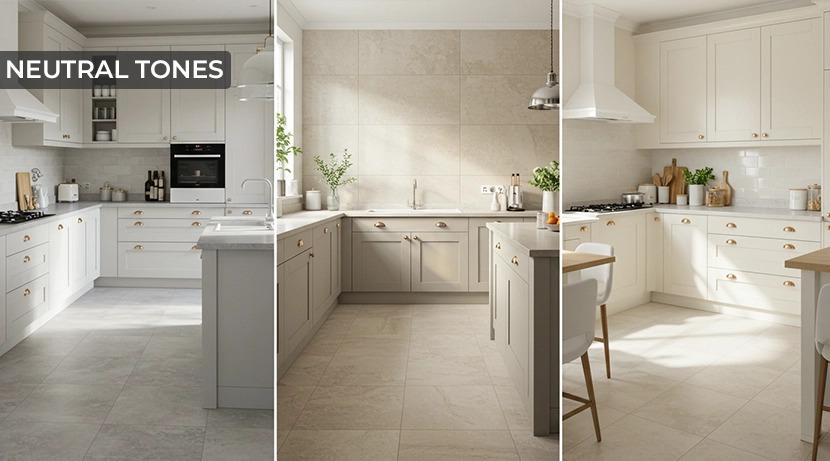
Popular options at Royale Stones
- Light Grey Porcelain
- Beige Limestone-effect Tiles
- Ivory Tiles
Bold and Dark Shades
If you are into dramatic effects, you can use dark tones for depth and contrast.
- Dark colours like Charcoal grey or slate black pair beautifully with neutral cabinets.
- Navy blue or green forest floors add character while hiding stains.
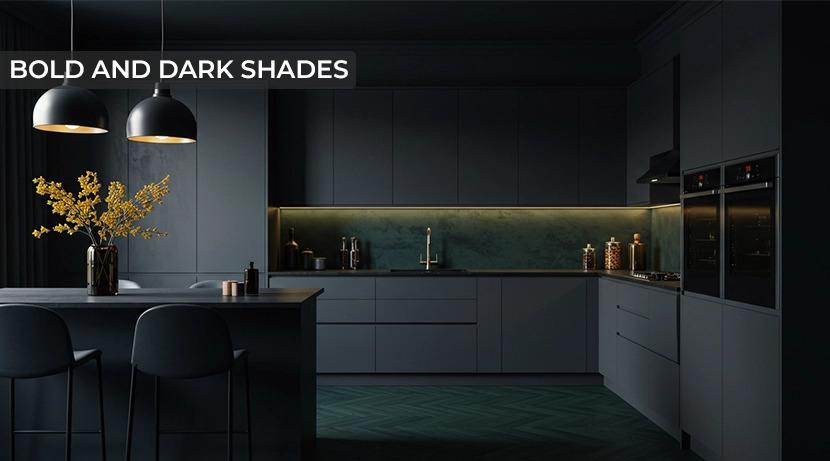
Patterned and Textured Tiles
Here you get a chance to give your kitchen floors a Moroccan-inspired look or encaustic print for personalisation with playful kitchen floor tile patterns.
- Patterned tiles are ideal for featured zones like under kitchen islands.
- You can also mix kitchen tile designs with plain wall tiles to avoid visual clutter in your kitchen.
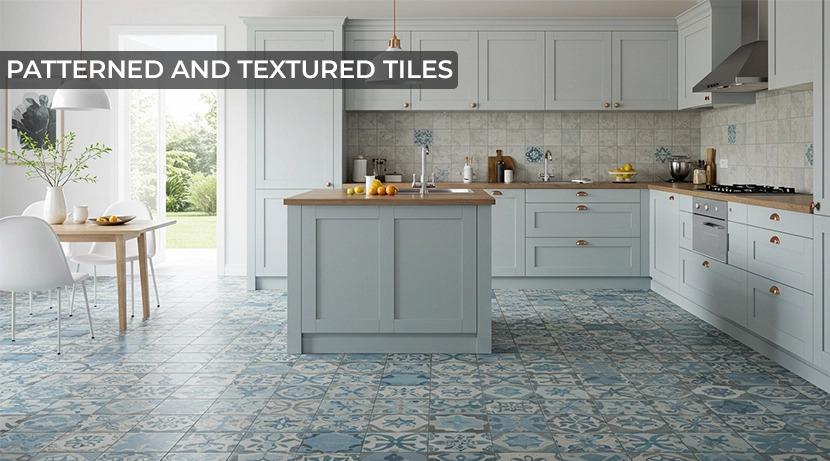
Tile Finish Options for Kitchen Floors
Here are some tile finish ideas that you can use as inspiration in your kitchen:
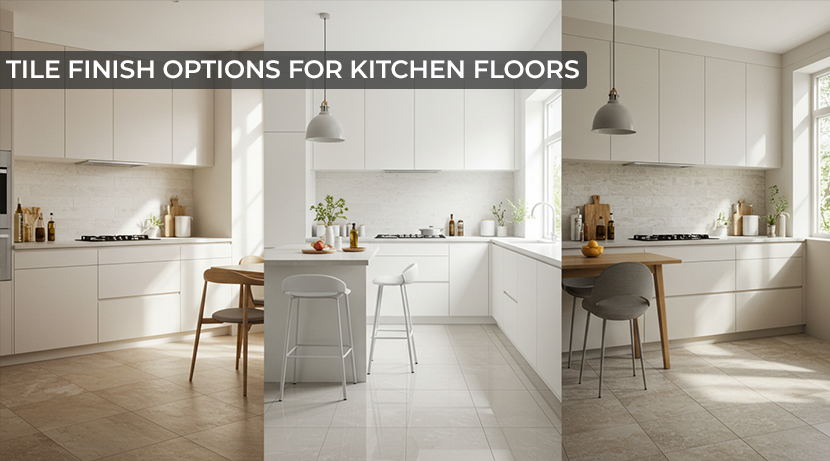
| Matt Finish | Gloss Finish | Textured & Anti-Slip Finishes |
| A natural and cleaner look. Has excellent slip resistance. Ideal for large family kitchens | Reflects light and makes your kitchen look brighter.Suitable for your dark kitchens where you need a boost of light. Requires regular cleaning and more maintenance to prevent streaks. | Ideal for busy kitchens where safety is a priority. Porcelain and stone-effect tiles are popularly used as anti-slip kitchen tiles. Adds tactile warmth underfoot. |
Which Tile Material Works Best in Kitchens
You have multiple material options for kitchen floor tile ideas and designs to use as tiles in your indoor space. Let’s discuss each and how compatible they are as kitchen floor tiles.
1. Porcelain Tiles
Porcelain kitchen tiles are one of the most sought-after tile options in UK kitchens. These durable kitchen tiles are dense, water-resistant, versatile and highly durable. They are ideal for the daily hustle and bustle in your kitchen. You can find porcelain in wood, marble, stone, and concrete effects.
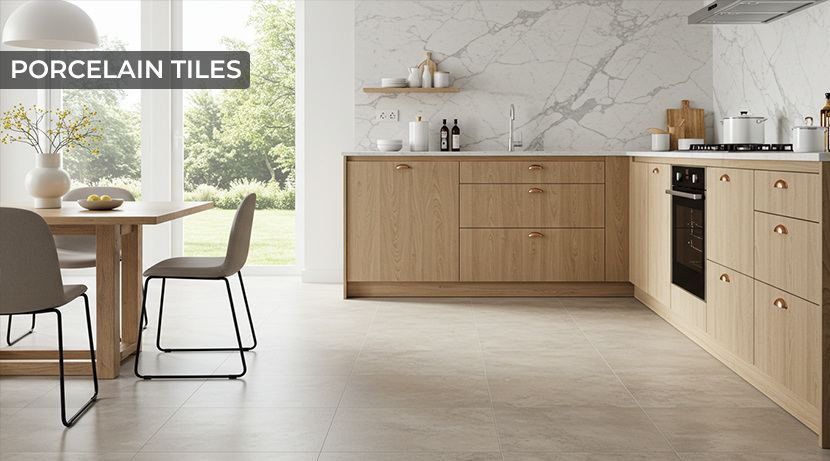
2. Ceramic Tiles
Ceramic kitchen tiles are also preferred for kitchens due to their durability and water resistance. However, they are not as durable and moisture-resistant as porcelain. The plus point against porcelain is that it is way affordable. They are great for low to medium-traffic kitchens.
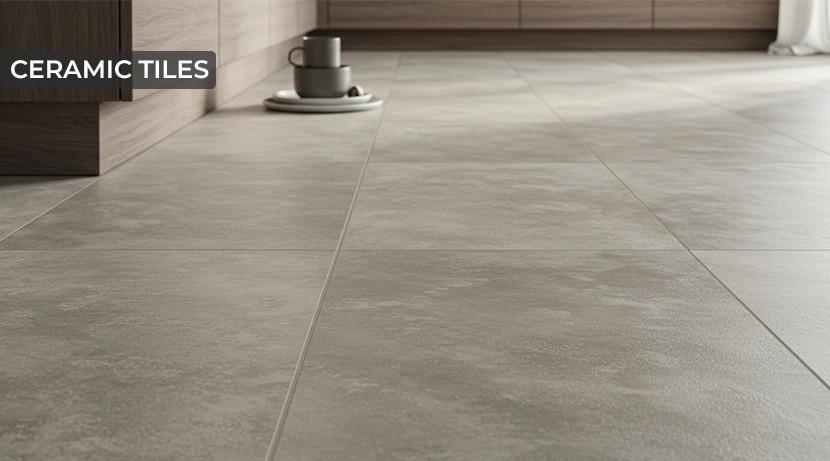
3. Natural Stone Tiles
If you have quite the budget for your kitchen and want a natural and rustic look following modern kitchen tile trends, choose natural stones like limestone, travertine, slate or sandstone. Each of these natural stones offers uniqueness and variation.
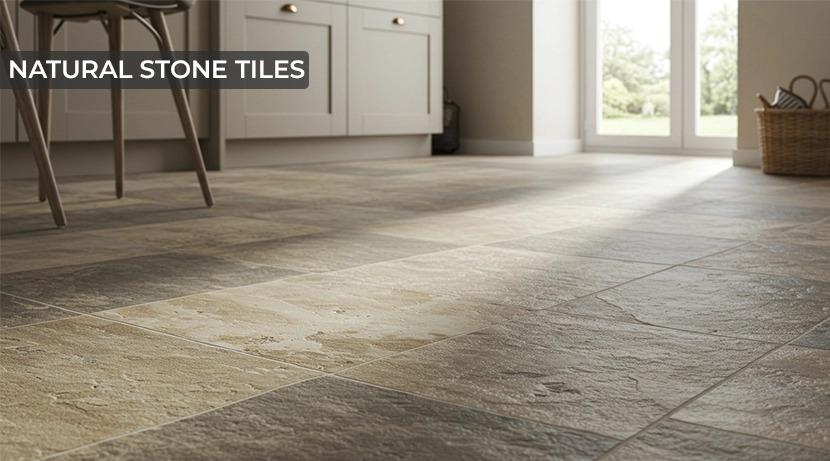
However, they are very high maintenance and require sealing after 2-3 years, as compared to porcelain and ceramic, which require no sealing.
4. Luxury Vinyl Tiles (LVT)
If you want a stone or wood look but want an easy installation and a cheap kitchen floor tile, LVT is your choice. Luxury Vinyl Tile mimics all-natural finishes and is warmer and softer underfoot. They are fully waterproof, but not FLOODPROOF.

Kitchen Wall Tile Coordination
If you want to create and maintain visual harmony in your kitchen, match your kitchen wall tiles with your flooring. But how?
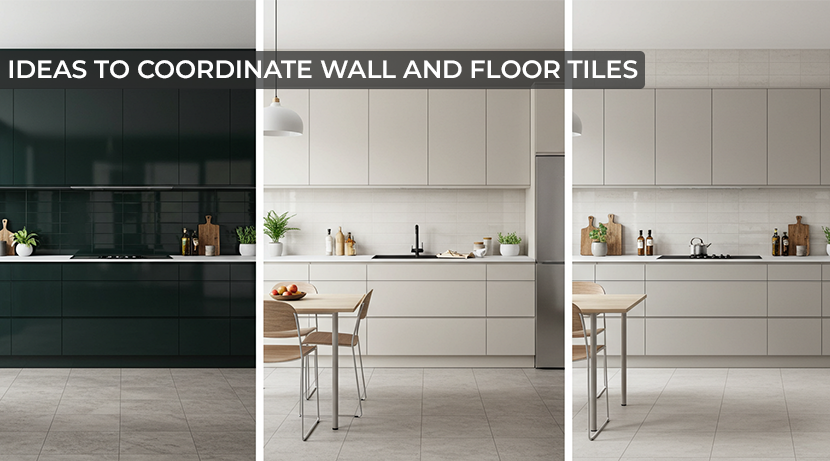
Ideas to Coordinate Wall and Floor Tiles
- Contrast Light and Dark Colours: Light floors and dark walls. Or vice versa.
- Matching Tones: Use complementary shades but within the same colour palette.
- Textural Balance: Pair your glossy feature wall with matt floor tiles for contrast.
Royale Stones and Kitchen Designs
When it comes to kitchen floor and wall tile designs, Royale Stones has a prominent name in quality and variety. We are your trusted paving and tiling supplier in the UK, with an extensive collection of tiles for your indoor use.
Our range includes large-format, stone-effect tiles, wood-effect tiles and on-trend matte finishes. Affordable kitchen tiles from Royale Stones also withstand moisture, spills and high traffic. We provide expert advice and nationwide delivery, helping you achieve functionality and flair in your kitchen space.
Choosing the Right Tile Colour and Size based on Kitchen Style
Different kitchens require equally different colours and sizes of tiles for the floor and walls.
Modern Kitchens
- For a modern kitchen floor tiles design, choose light coloured or neutral porcelain tiles.
- For a seamless look, keep your grout lines thin.
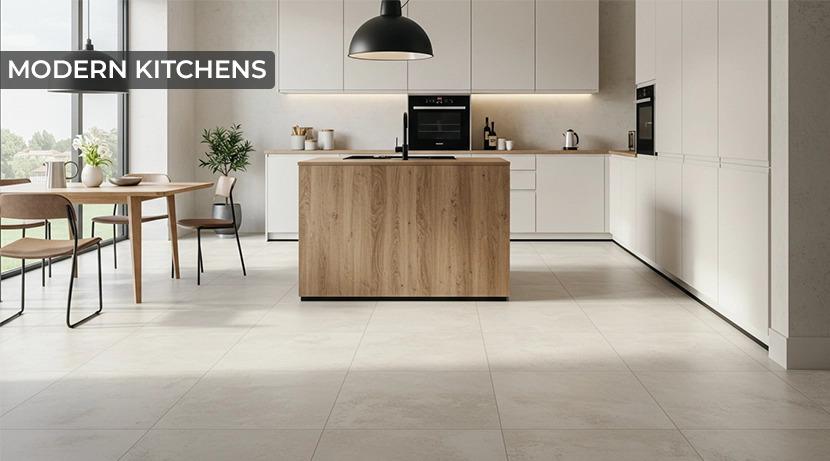
Classic Kitchens
- For classic kitchen designs, beige or travertine-effect tiles in mid-size (450x450mm) will suit best.
- For a more traditional look, pair it with subway wall tiles.
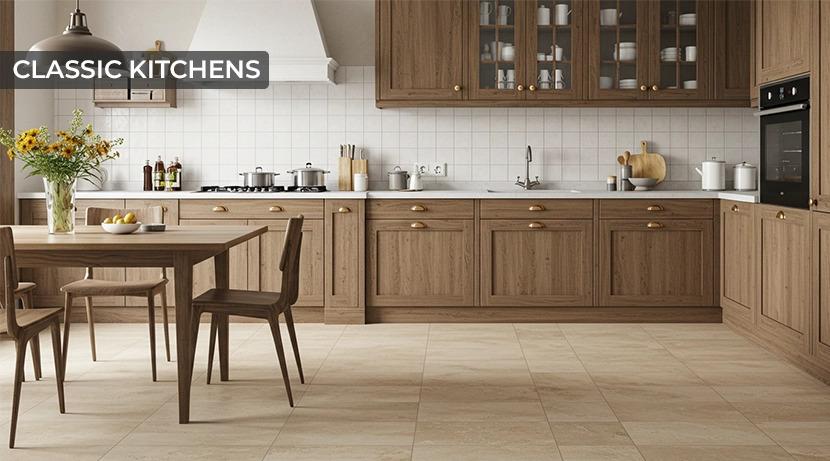
Country or Farmhouse Kitchens
- Rustic stone tiles or terracotta tones in 300x300mm size will add warmth to your kitchen.
- Tumbled edges will add more authenticity to your space.
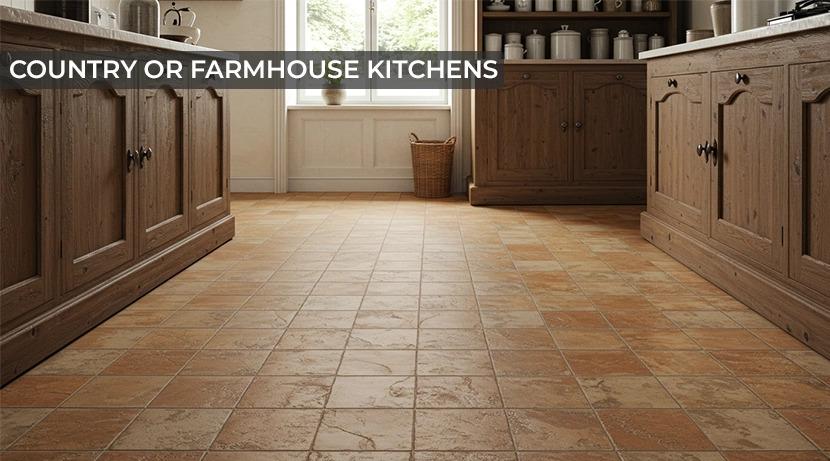
Industrial Kitchens
- If you are designing your industrial kitchen with floor tiles, go for concrete-effect porcelain or black slate tiles.
- Mix your tiles with stainless steel accents or an urban edge.
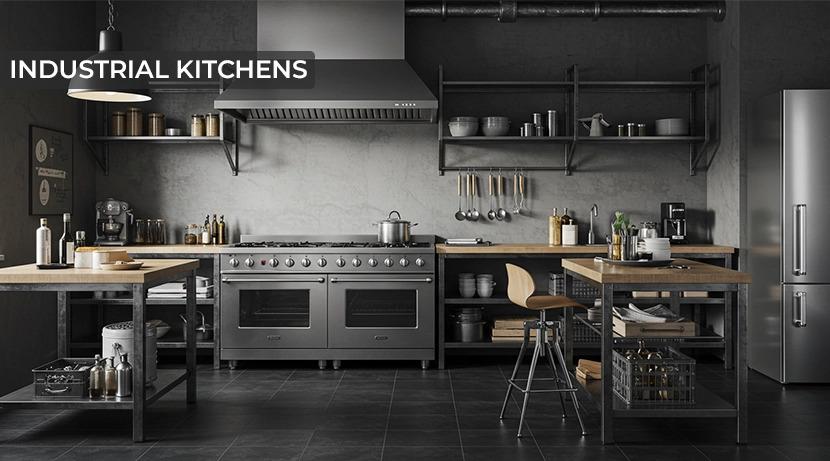
Conclusion
When you say the best tile size for your kitchen floor, you include all: proportions, design intent, and practicality. For small kitchens, opt for large-format tiles for an illusion of space. For open layouts, use rectangular or patterned tiles for visual interest. Pair your floor with complementary kitchen wall tiles for a cohesive look.
Premium kitchen floor tiles and wall tiles at Royale Stones UK come in a variety of sizes, colours and finishes for every taste. We cater for all: modern, minimalistic, classic, and countryside kitchen styles. Your perfect kitchen tiles await you at our UK showrooms.
Frequently Asked Questions
How big should kitchen floor tiles be?
450x450mm and 600x600mm tiles look best in UK kitchens as they strike the right balance of style and proportion. Large tiles suit open layouts as well as small kitchens to give them a spacious look.
What size floor tiles make a kitchen look bigger?
Large-format tiles of sizes 600x600mm or 600x900mm with reduced grout lines visually expand your kitchen, making it look bigger.
What is the 3/4/5 rule for tiling?
Measure 3 units on one side, 4 on the other side, and adjust until it measures to 5 units, confirming a square corner.
Are big tiles better in a small kitchen?
Large tiles are an ideal floor tile size for small kitchens, making a small kitchen appear larger with fewer grout lines and visual breaks. Choose light colour tiles to add more to a spacious look.
